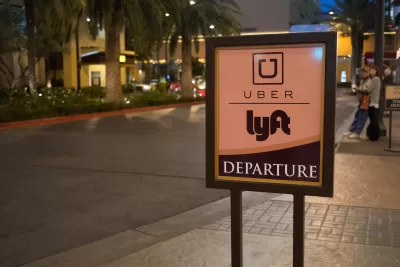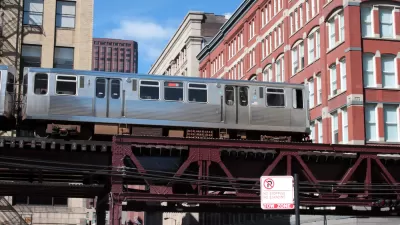In San Francisco, many who drive for Uber sleep in parking lots and live elsewhere to avoid sky-high rents.

According to a Bloomberg article from Eric Newcomer and Olivia Zaleski, many of the best places to drive for Uber, in terms of regular work and high surge prices, are also the most expensive places to live—places like San Francisco, where high home prices and rents are slowing the economy and pushing out working families. One driver the reports spoke to, German Tugas, "… drives over 70 hours a week in San Francisco, where the work is steadier and fares are higher than in his hometown, Sacramento." After work, "He and at least a half dozen other Uber drivers gathered in the Social Safeway parking lot to sleep in their cars before another long day of driving." While Uber touts the ability of its drivers to work part time, Newcomer and Zaleski contend, "In a sense, drivers sleeping in their cars typifies, in an extreme way, what Uber said it does best: offer drivers flexibility."
"The vast majority of Uber’s full-time drivers return home to their beds at the end of a day’s work. But all over the country, there are many who don’t," Newcomer and Zaleski report. "In Chicago, drivers call the 7-11 at the intersection of Wrightwood & north Lincoln Avenue the 'Uber Terminal.'" Even in the relatively less expensive midwest, Newcomer and Zaleski spoke to a driver who sleeps in that parking lot and lives in Indiana. It's an issue that's unlikely to go away any time soon.
FULL STORY: When Their Shifts End, Uber Drivers Set Up Camp in Parking Lots Across the U.S.

Trump Administration Could Effectively End Housing Voucher Program
Federal officials are eyeing major cuts to the Section 8 program that helps millions of low-income households pay rent.

Planetizen Federal Action Tracker
A weekly monitor of how Trump’s orders and actions are impacting planners and planning in America.

Ken Jennings Launches Transit Web Series
The Jeopardy champ wants you to ride public transit.

Rebuilding Smarter: How LA County Is Guiding Fire-Ravaged Communities Toward Resilience
Los Angeles County is leading a coordinated effort to help fire-impacted communities rebuild with resilience by providing recovery resources, promoting fire-wise design, and aligning reconstruction with broader sustainability and climate goals.

When Borders Blur: Regional Collaboration in Action
As regional challenges outgrow city boundaries, “When Borders Blur” explores how cross-jurisdictional collaboration can drive smarter, more resilient urban planning, sharing real-world lessons from thriving partnerships across North America.

Philadelphia Is Expanding its Network of Roundabouts
Roundabouts are widely shown to decrease traffic speed, reduce congestion, and improve efficiency.
Urban Design for Planners 1: Software Tools
This six-course series explores essential urban design concepts using open source software and equips planners with the tools they need to participate fully in the urban design process.
Planning for Universal Design
Learn the tools for implementing Universal Design in planning regulations.
Ada County Highway District
Clanton & Associates, Inc.
Jessamine County Fiscal Court
Institute for Housing and Urban Development Studies (IHS)
City of Grandview
Harvard GSD Executive Education
Toledo-Lucas County Plan Commissions
Salt Lake City
NYU Wagner Graduate School of Public Service




























